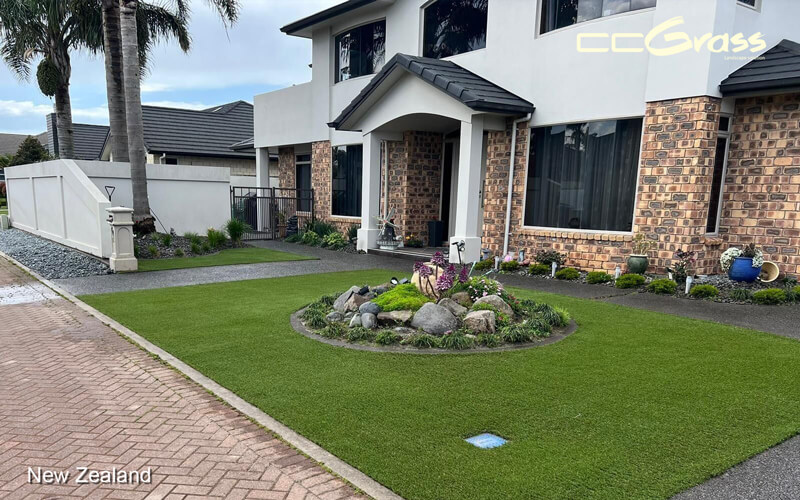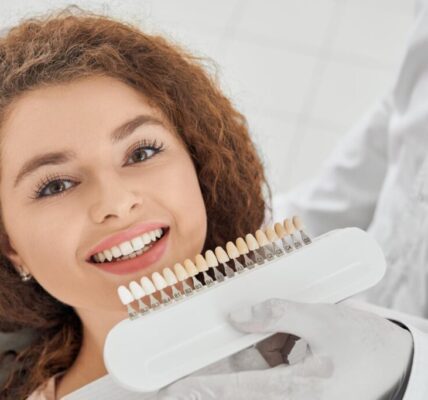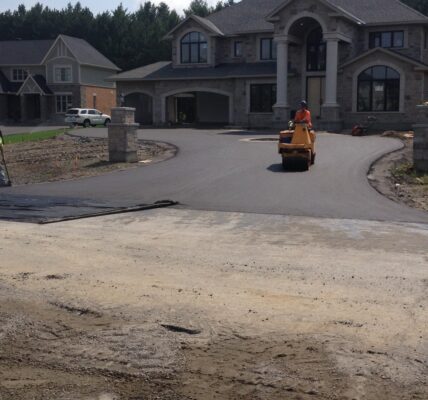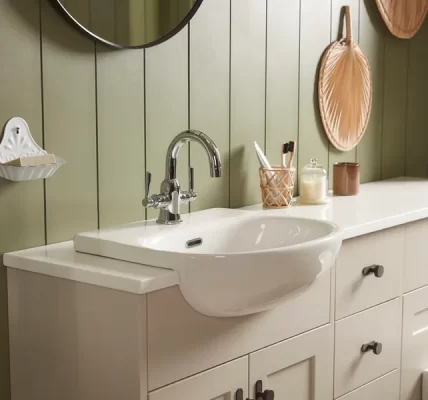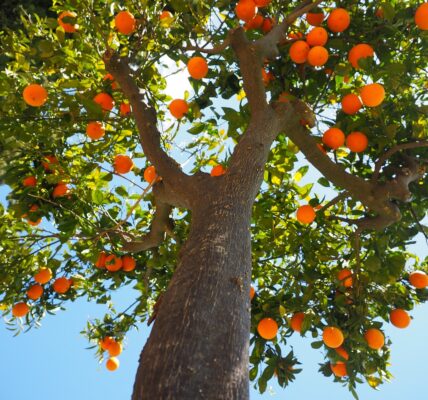Artificial lawns, also known as synthetic grass or fake grass, are surfaces made from synthetic fibres that mimic the look and feel of natural grass. They were initially developed in the 1960s for use in sports stadiums, but over time, they evolved into residential and commercial landscaping solutions. Early versions were often criticized for their unrealistic appearance and lack of durability. However, advancements in materials and technology have led to the development of more lifelike and durable artificial turf options.
Benefits of Artificial Lawns:
Despite negative perceptions, artificial lawns offer several benefits:
- Low Maintenance: Unlike natural grass, artificial lawns require minimal upkeep, eliminating the need for mowing, watering, and fertilizing.
- Water Conservation: In regions facing water scarcity or drought conditions, artificial lawns provide a water-efficient landscaping solution by eliminating the need for irrigation.
- Year-round Green Appearance: Artificial lawns maintain their lush green appearance throughout the year, regardless of weather conditions or foot traffic, providing consistent aesthetics.
- Durability: High-quality artificial turf is resistant to wear and tear, making it suitable for high-traffic areas such as sports fields and playgrounds.
- Allergy-Free: For individuals allergic to grass pollen, artificial lawns provide an allergy-free alternative for outdoor recreation.
To counteract negative connotations associated with terms like “fake grass,” “synthetic turf,” or “artificial turf,” proponents advocate for using the term “artificial lawn.” This term emphasizes the functionality and purpose of these surfaces as a practical landscaping solution while avoiding the negative associations with artificiality. Additionally, “artificial lawn” highlights the environmental benefits, such as water conservation and reduced chemical usage, associated with opting for synthetic grass over natural turf.
Materials Used in Artificial Lawns and Their Properties:
- Polyethylene (PE): PE is a common material used in artificial lawns due to its soft texture and natural appearance. It is resistant to UV rays and generally provides good durability.
- Nylon: Nylon is known for its strength and resilience, making it suitable for high-traffic areas. It maintains its shape well and offers excellent resistance to wear and tear.
- Polypropylene (PP): PP is often used as a secondary material in artificial lawns. It provides additional support and stability to the turf.
- Backing Material: The backing of artificial turf typically consists of a layer of latex or polyurethane, providing stability and facilitating drainage.
Different Types of Artificial Lawns:
- Pile Height: Pile height refers to the length of the fibres in the artificial turf. Higher pile heights can provide a more lush appearance but may require more maintenance.
- Blade Shape: Artificial turf blades come in various shapes, including flat, C-shaped, and diamond-shaped. Blade shape can affect the look and feel of the turf.
- Density: The density of artificial turf refers to the number of fibres per square inch. Higher-density turf tends to be more durable and resilient.
- Drainage Backing: Some artificial lawns come with specialized backing designed to facilitate drainage, preventing water buildup and ensuring proper water flow.
Choosing the Right Artificial Lawn for Your Needs:
- Traffic: Consider the amount of foot traffic the area will receive. For high-traffic areas like playgrounds or sports fields, opt for durable turf with a higher pile height and good resilience.
- Drainage: If you live in an area with heavy rainfall or poor drainage, choose artificial turf with specialized drainage backing to prevent water buildup.
- Budget: Artificial turf comes in a range of prices depending on the materials used and the quality of construction. Determine your budget and look for options that meet your needs without exceeding your budget.
Installation Process: Professional vs. DIY Options:
- Professional Installation: Hiring professionals to install your artificial lawn ensures proper preparation of the site, precise measurements, and professional installation techniques. This option is ideal for complex installations or if you lack the time or expertise to do it yourself.
- DIY Installation: DIY installation may be suitable for smaller areas or if you’re comfortable with manual labour and have some experience with landscaping. It typically involves preparing the site, laying down the base materials, and installing the turf according to manufacturer instructions. DIY installation can be cost-effective but requires careful attention to detail to ensure a proper outcome.
Maintenance:
- Brushing: Regular brushing helps to maintain the upright position of the fibres, ensuring a natural appearance and preventing matting. This can be done using a stiff brush or a power broom.
- Infill Top-Up: Infill materials such as sand or rubber granules may compact over time, requiring periodic top-ups to maintain proper drainage and support for the turf.
- Occasional Cleaning: Artificial lawns can accumulate dust, dirt, and organic debris over time. Occasional cleaning with water and mild detergent or a specialized artificial turf cleaner helps to keep the surface clean and hygienic.
Addressing Misconceptions:
- Heat Retention: While it’s true that artificial lawns can absorb heat and become warm to the touch, advancements in technology have led to the development of heat-reducing infill materials and cooling systems that help mitigate heat retention.
- Safety for Pets and Children: High-quality artificial lawns are designed to be safe for pets and children. They are free from harmful chemicals, and some options even come with antimicrobial properties to prevent the growth of bacteria.
- Recyclability: Contrary to the misconception that artificial lawns are not recyclable, many manufacturers offer recycling programs for used turf. The materials used in artificial lawns, such as polyethene and polypropylene, can be recycled and repurposed into new products.
Environmental Impact:
- Water Usage: Natural grass lawns require regular watering to maintain their health and appearance, especially in arid or drought-prone regions. In contrast, artificial lawns eliminate the need for irrigation, conserving significant amounts of water.
- Chemical Usage: Maintaining natural grass often involves the use of fertilizers, pesticides, and herbicides to control weeds, pests, and diseases. These chemicals can leach into the soil and groundwater, posing environmental risks. Artificial lawns eliminate the need for chemical treatments, promoting a healthier ecosystem.
- Carbon Footprint: While the production and disposal of synthetic materials used in artificial turf raise environmental concerns, the reduced water usage and elimination of fossil fuel consumption associated with lawn maintenance offer potential carbon footprint reductions compared to natural grass.
Aesthetic and Functional Considerations:
- Appearance: Natural grass provides a lush, organic aesthetic that some people prefer over the uniform appearance of artificial turf. However, artificial lawns can maintain their green colour year-round, regardless of weather conditions or foot traffic.
- Durability: High-quality artificial turf is designed to withstand heavy use and adverse weather conditions, maintaining its appearance and functionality over time. In contrast, natural grass may become patchy or worn in high-traffic areas.
- Allergies and Sensitivities: For individuals with grass allergies or sensitivities to pollen and pesticides, artificial lawns offer an allergy-free alternative for outdoor recreation.
Landscape Adaptability:
- Versatility: Artificial lawns can be installed in various settings, including residential yards, commercial landscapes, sports fields, and rooftop gardens. They can also be customized to accommodate different shapes, slopes, and landscaping features.
- Maintenance Flexibility: Artificial lawns are suitable for locations where natural grass struggles to thrive, such as shaded areas, high-traffic zones, or regions with poor soil quality or water restrictions.
Showcasing Creative Uses of Artificial Lawns:
- Balconies: Artificial lawns can transform urban balconies into green spaces, providing a soft and comfortable surface for relaxation and outdoor activities.
- Playgrounds: Synthetic turf is a popular choice for playgrounds due to its durability, safety features, and ability to withstand heavy use. It provides a soft landing surface for children, reducing the risk of injuries from falls.
- Rooftops: Artificial lawns can be installed on rooftops to create green roofs, which offer environmental benefits such as improved insulation, reduced stormwater runoff, and enhanced biodiversity in urban areas. They also provide additional outdoor living space for residents.

